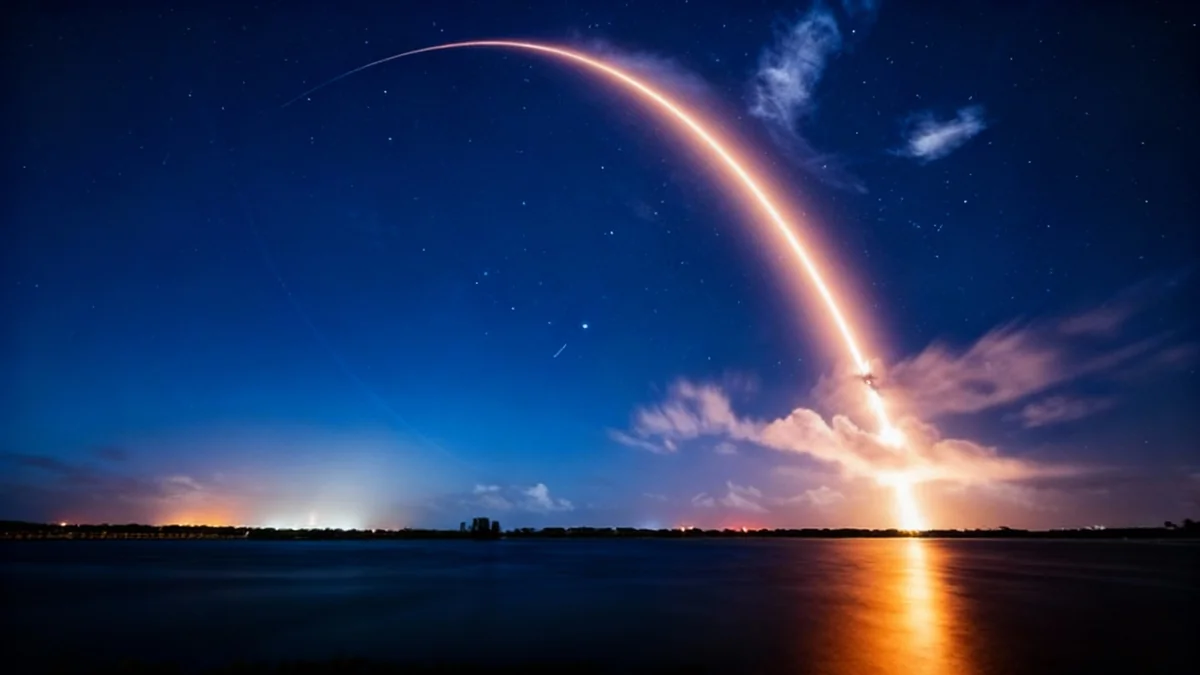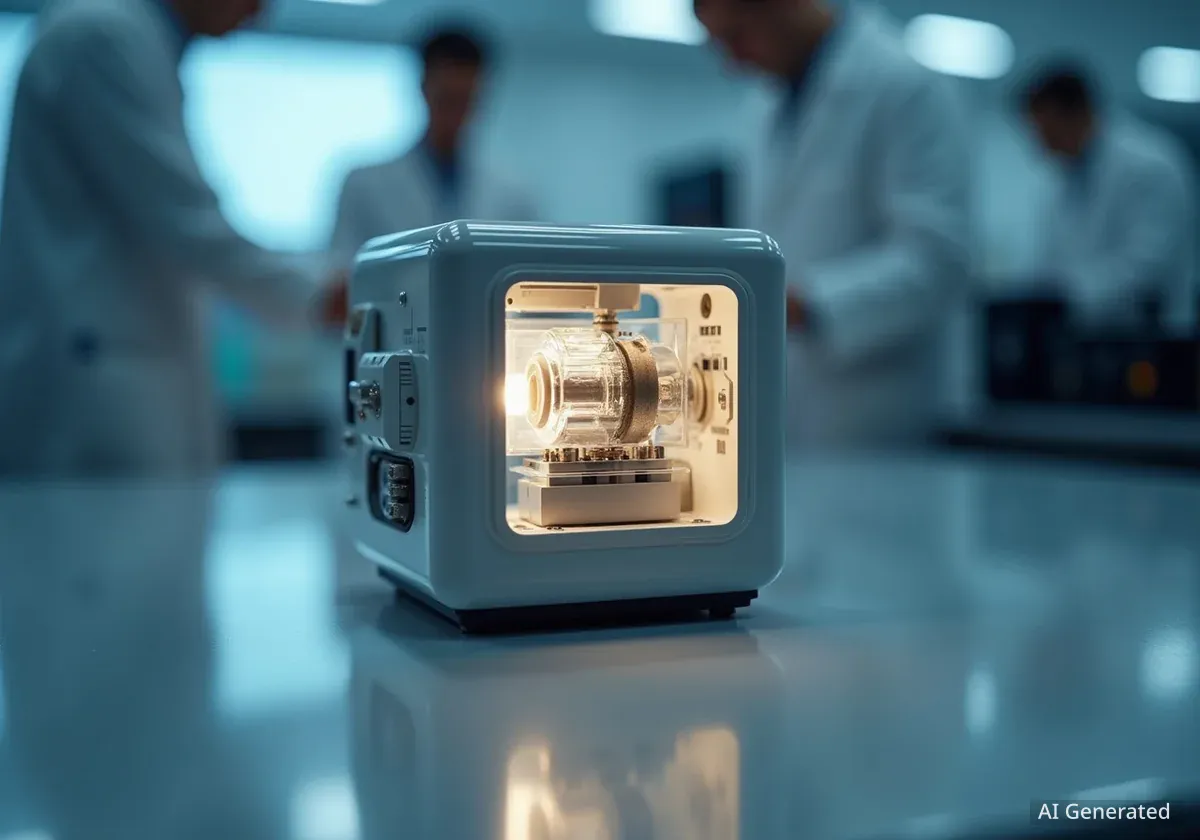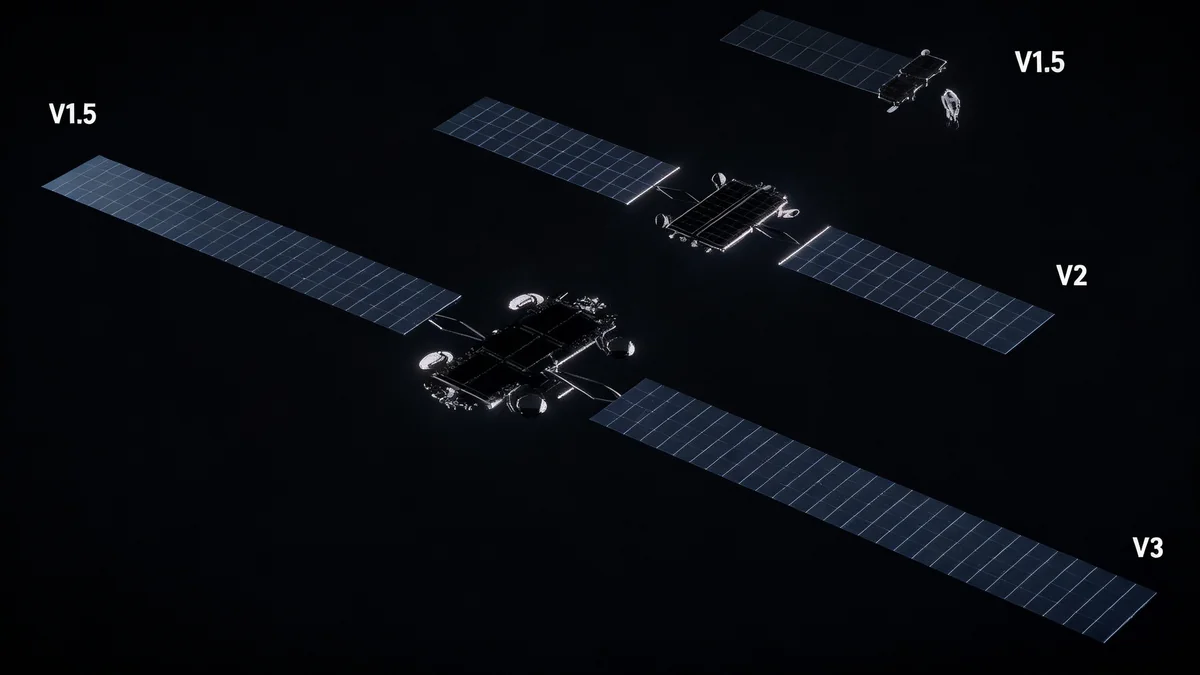Central Florida residents may hear a sonic boom in the pre-dawn hours of Sunday, November 1, 2025, as SpaceX targets an early morning launch from Cape Canaveral. The event will coincide with the end of Daylight Saving Time, potentially providing an audible reminder for residents to turn their clocks back.
A Falcon 9 rocket is scheduled to lift off from Space Launch Complex 40 at Cape Canaveral Space Force Station, carrying the Bandwagon-4 mission into orbit. The launch window opens at 1:09 a.m. EDT and closes at 1:20 a.m. EDT. Following stage separation, the rocket's first-stage booster will perform a landing back on Earth, generating the sonic boom.
Key Takeaways
- A SpaceX Falcon 9 rocket is scheduled for a 1:09 a.m. EDT launch on Sunday, November 1, 2025.
- The mission, named Bandwagon-4, will lift off from Cape Canaveral Space Force Station.
- The rocket's returning first-stage booster is expected to create a sonic boom over parts of Central Florida.
- The event occurs shortly before clocks are set to fall back one hour at 2 a.m. for the end of Daylight Saving Time.
Mission Details and Timing
The upcoming launch is part of SpaceX's Bandwagon program, which provides rideshare opportunities for various small satellites. These missions allow multiple customers to place their payloads into orbit on a single rocket, reducing costs and increasing access to space.
The specific payloads for the Bandwagon-4 mission have not been fully disclosed, which is common for rideshare flights involving commercial or governmental clients. However, these missions typically support a range of applications, from Earth observation and communications to technology demonstrations.
The launch is timed for a narrow 11-minute window early Sunday morning. This precise timing is crucial for placing the satellites into their designated orbits. For residents, the most noticeable part of the mission will likely occur after the rocket has already ascended far into the atmosphere.
The Science of a Sonic Boom
A sonic boom is the sound associated with shock waves created when an object travels through the air faster than the speed of sound. While the Falcon 9 ascends, it does not create a boom heard on the ground because its trajectory is angled away from populated areas.
However, when the first-stage booster returns for a landing at Cape Canaveral, its descent path brings it back over the region at supersonic speeds. As the booster re-enters the Earth's atmosphere, it generates powerful shock waves that travel to the ground.
What is a Sonic Boom?
When an object like a rocket booster moves faster than the speed of sound (approximately 767 mph at sea level), it displaces air molecules and creates pressure waves. At supersonic speeds, these waves cannot get out of the way of each other and instead combine to form a single, intense shock wave. When this wave passes over an observer, it is heard as a loud, thunder-like sound, or a double boom.
The sound is often described as a deep, double-rumble rather than a sharp crack. The intensity of the boom depends on several factors, including the booster's altitude, speed, and atmospheric conditions like temperature, humidity, and wind.
Booster Recovery and Reusability
The booster scheduled for this mission is making its third flight. This highlights SpaceX's focus on reusability, a core component of its strategy to lower the cost of space access. After launching the second stage and its satellite payload toward orbit, the first stage performs a series of engine burns to reverse its course and target a precise landing zone.
Fact: Reusing rocket boosters is a key innovation by SpaceX. Each successful landing and subsequent reuse saves the company tens of millions of dollars in manufacturing costs, significantly lowering the barrier to entry for space-based services.
This particular booster will attempt a landing at one of SpaceX's landing zones at the Cape Canaveral facility. These landings, known as Return to Launch Site (RTLS) landings, are what cause the sonic booms heard across the region. For missions with heavier payloads or those requiring higher orbits, boosters typically land on autonomous droneships positioned hundreds of miles out in the Atlantic Ocean.
The ability to recover and refly these boosters is central to maintaining a high launch cadence. SpaceX has successfully landed its boosters over 200 times, a feat that has transformed the modern launch industry.
A Unique Wake-Up Call
The timing of the sonic boom adds an unusual element to the event. It is expected to occur just under an hour before Daylight Saving Time officially ends at 2 a.m., when clocks are set to move back to 1 a.m. local time.
While not an official alarm, the potential rumble across the sky may serve as a reminder for those who are still awake. Weather conditions will play a significant role in how widely the sonic boom is heard. Clear skies and calm atmospheric conditions can allow the sound to travel farther and be perceived more loudly.
Officials typically advise residents that sonic booms pose no threat to property or people, though they can be startling, especially during the quiet of night. The sound is often compared to distant thunder or loud construction noise.
How to Watch the Launch
For those interested in viewing the launch itself, the Falcon 9 rocket should be visible for several minutes after liftoff from vantage points across Central and Eastern Florida, weather permitting.
SpaceX will also provide a live webcast of the mission, which typically begins about 15 minutes before the scheduled liftoff. The broadcast follows the rocket's ascent, stage separation, and the first-stage booster's landing attempt. This provides a safe and informative way to experience the entire launch sequence from home.
The launch schedule remains subject to change due to weather or technical considerations. Any updates will be provided by SpaceX and the U.S. Space Force closer to the launch window.





